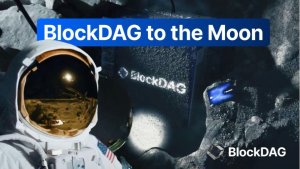Top Facts About the Ethereum Merge
With the so-called “Big Merge” just weeks away, let’s jump right into what it all means and how cryptocurrency trading prices could be affected in the aftermath. First top: learning the difference between Bitcoin and Ethereum in order to understand why Ethereum is making such big changes.

Bitcoin vs. Ethereum
Bitcoin functions as a currency and a trading instrument, but nothing more. The Ethereum blockchain, by contrast, has practical uses in facilitating “smart contracts” and hosting NFT marketplaces, for which there seems to be some sustainable demand—perhaps enough to send Ethereum prices soaring past the King of Crypto in time, according to crypto promoter Roger Ver, who said he could see Ethereum’s market cap outshining Bitcoin’s at some point. Knowing this can help better illustrate what the Big Merge is: essentially an upgrade from a proof-of-work system of validating transactions to one that works by proof-of-stake. The excitement behind the Big Merge is so big, in fact, that the mere announcement of it buoyed up ETH prices in the first half of this year, despite otherwise choppy crypto waters at the time. By August 25th, Ether had doubled its price in the previous two months. At the same time, Ether prices were volatile, tumbling from levels around $2,000 mid-month to approximately $1,500 by month’s end.
One reason for the excitement was environmental: The new system could lower Ethereum’s electricity consumption by a factor of 1000. Other reasons have to do with improvements in blockchain efficiency. Whichever factor or combinations of factors was key, “The crypto industry has needed a new narrative, new hope, for some time now and I believe Ethereum delivered that with the Merge”, explained Max Kordek of Lisk in late August. Join us as we discuss the significance of the Merge and consider its possible results.
August and September
August 4th saw the first phase of the big changeover, when the Ethereum Improvement Proposal (EIP) 1559 was initiated. The aim here was to hold down supply of the Ether token, which would boost the value of each one, and also to keep transaction fees steady. After this stage was complete, costs on network transactions would be more clearly defined, as would the amount of Ether paid out to miners who help validate transactions. As to the issue of supply, 539.29 Ether tokens would be “burned” or removed from circulation. As this upgrade – which was nicknamed London – approached, Ether prices sunk, but, by the day after it occurred, they had picked up steam, gaining 2.6% to settle at $2,796. This kind of activity seemed promising to Viktor Bunin of Bison Trails, who remarked that “The new ether supply dynamics may spark a new virtuous cycle where increased price leads to greater adoption and vice versa”. Pankaj Balani of Delta Exchange disagreed, maintaining that only a Bitcoin bull run could bring Ether along “Further and test the $3,000 mark”.
The next important date that Ethereum cofounder Vitalik Buterin wanted his Twitter followers to diarize was September 6th, when the following stage – called the Bellatrix upgrade – was scheduled. Bellatrix would itself trigger Paris – the final stage – and the technical work would have been accomplished. Ultimately, completion of the Merge “Is coming around September 10-September 20”, Buterin tweeted.
The Fallout
Practically speaking, the Merge was going to split the Ethereum network into two parts – one working by proof-of-stake and one by proof-of-work. Projects based on the Ethereum blockchain, like the NFT marketplace OpenSea, would find themselves duplicated. It would have to be decided, in some way, which were the “real” NFTs. Bitcoin has experience with this kind of “forking” process, for instance when Bitcoin Cash and Bitcoin Gold were created. Similar risks surrounded the Merge, including the concern people would show no interest in the newly created branch.
In terms of actual opposition to the Merge, two voices had sounded out. One claimed that proof-of stake was a bad idea, despite the environmental benefits, due to the fact that larger stakeholders would accrue more power on the blockchain, detracting from its decentralized character. The other complaint came from people who had spent thousands of dollars on equipment for mining Ether, which stood to instantly become useless.
Would the changeover spark any immediate activity in Ether prices? If it goes smoothly, yes, according to analysts like Alex Tapscott of Ninepoint Partners, who said it “Should put a strong bid under the price of ETH and help it resume its upward trend”. On the other hand, Stephane Ouellette of FRNT Financial said no such reaction should be expected. Rather, the impact on ETH prices depended on “The subsequent years of development on the blockchain and the applications and technologies which emerge”.
Looking Forward
Taking a broader view of the cryptocurrency sector as a whole, the Merge may also make its mark and potentially “Boost the price of all crypto assets”, according to Tapscott. Don’t forget the potential gains on the environmental front from the successful integration of our concerns for our planet’s welfare into big business.
Those experienced in trading on the price movements of cryptocurrency as CFDs ought to keep an extra eye on top cryptos like ETH and BTC, the notorious volatility of which could act up in the period immediately surrounding the Merge. At the end of August, Katie Stockton of Fairlead Strategies, referring to Ether prices, wrote: “Short-term momentum now negative” and that a descent to the point of $1,000 was potentially on the cards. Max Kordek believed Ether prices would eventually be enriched through the Merge, albeit in the long-term. Which way will cryptocurrency prices swing as the merge approaches? Only time will tell.









